Monaco celebrates Picasso
To commemorate the 40th anniversary of Picasso's death, Monaco Grimaldi Forum hosts an exhibition under the title "Monaco celebrates Picasso". The event, running up to September 15th, gives the opportunity to the visitors to see an exceptional selection of Picasso's major works.
Three Picasso specialists are behind the curatorial work of the exhibition, Jean-Louis Andral (current director of the Picasso Museum in Antibes), Marilyn McCully and publisher Michael Reaburn. Their success is that they carefully selected and brought together 161 masterpieces from prestigious institutions, the Picasso estate, French and international private collections such as Nahmad collection covering the majority of Picasso's artistic periods. The exhibition is divided in two parts, the first (Picasso Côte d'Azur) is devoted to works created by the artist during the years spent in the French Riviera and the second (Picasso dans la collection Nahmad) is the contribution of the Nahmad family to the event with 101 Picasso artworks presented to the public for the first time.
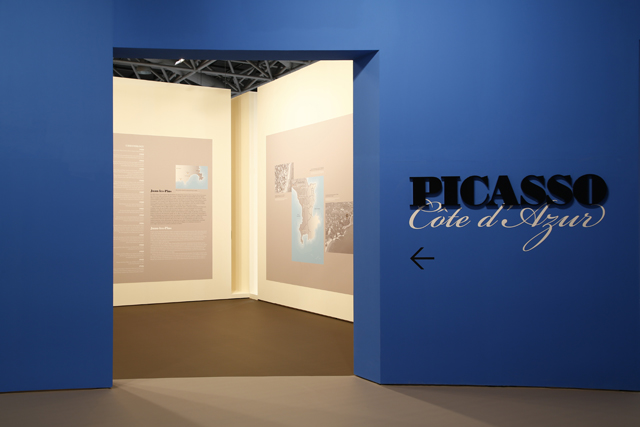
©JC Vinaj
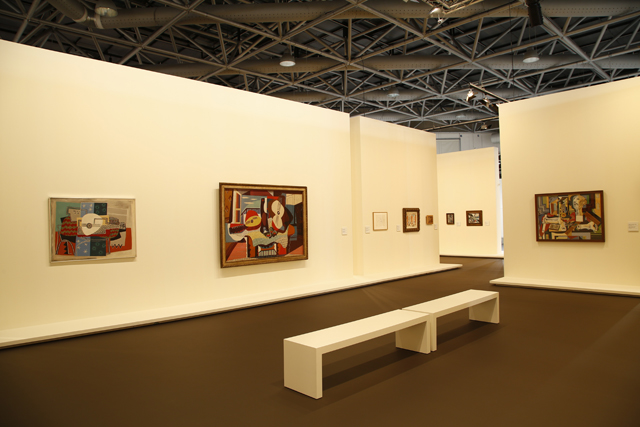
©JC Vinaj
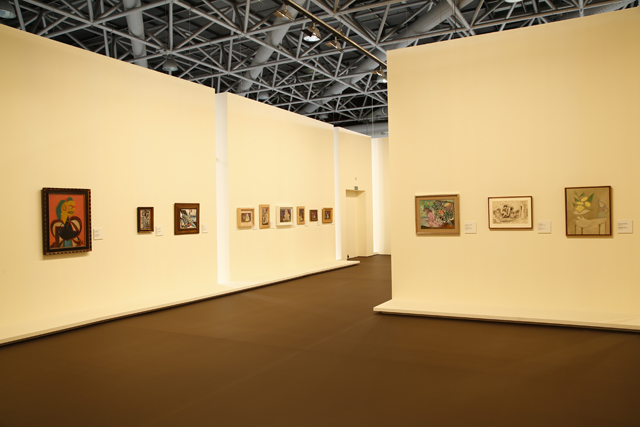
©JC Vinaj
The works that form the first part of the exhibition reflect the artist's experiences and reactions in the Mediterranean light, sea and environment. Bright colors, classical themes, mythology and summer spirit are embodied in his paintings.
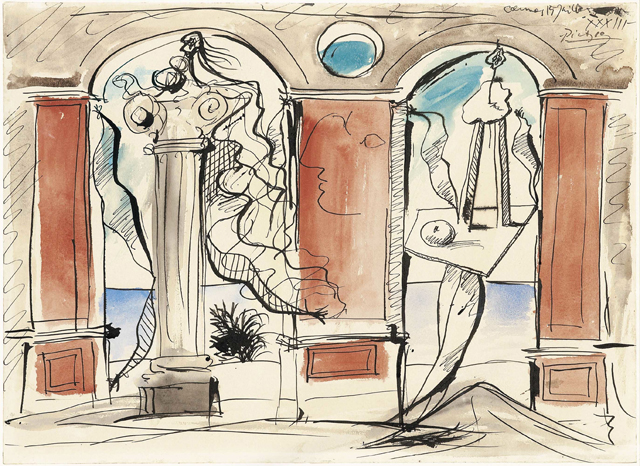
Composition (Cannes, 15 juillet 1933), Aquarelle, plume et encre sur papier marouflé sur carton, 41 x 51 cm Collection privée © Succession Picasso 2013
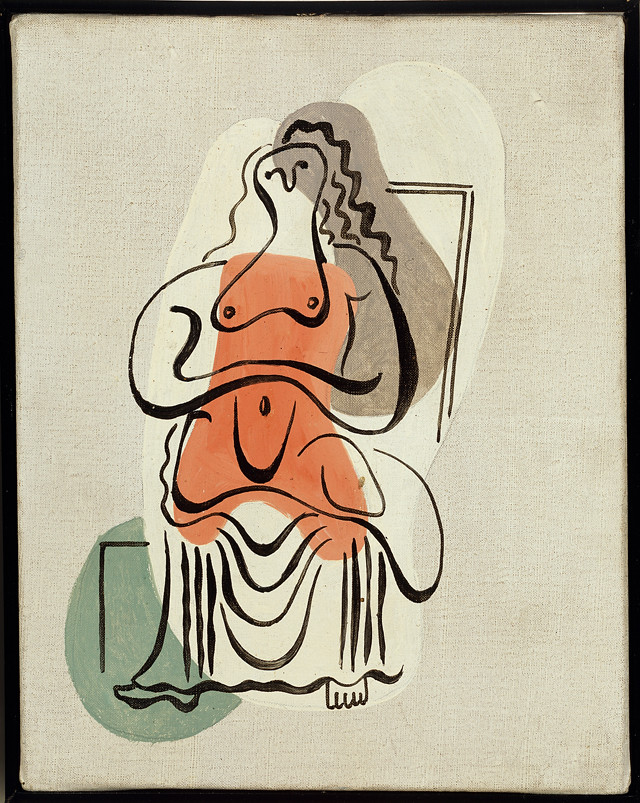
Femme à la draperie assise. Femme nue assise (1924) Oil on canvas, 24 x 19 cm, Collection particulière, Photo Maurice Aeschimann Genève © Succession Picasso 2013
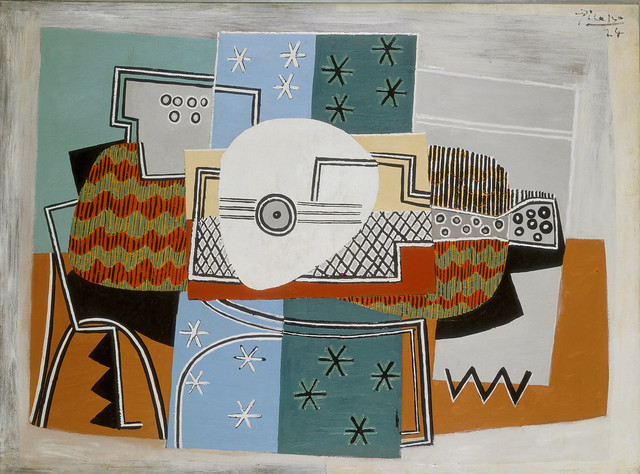
Guitar, Compote Dish and Grapes (Juan-les-Pins, été 1924) Oil on canvas, 97,5 x 130 cm, Acquisition, 1958, A6437 Collection Stedelijk Museum Amsterdam © Succession Picasso 2013
The Nahmad holdings of Picasso include about 200 works of rare quality, equal to the spirit which animates this family of collectors. During a conversation between Helly Nahmad, Ezra Nahmad's son and Jean-Louis Andral, Helly explained: "Picasso is the capital of the art world, the capital of the art history, the heart of the art scene. For us it's as if he was our mentor, someone who's done everything. He's a whirlwind of creative power. He's ultimate in art and he's ultimate for us."
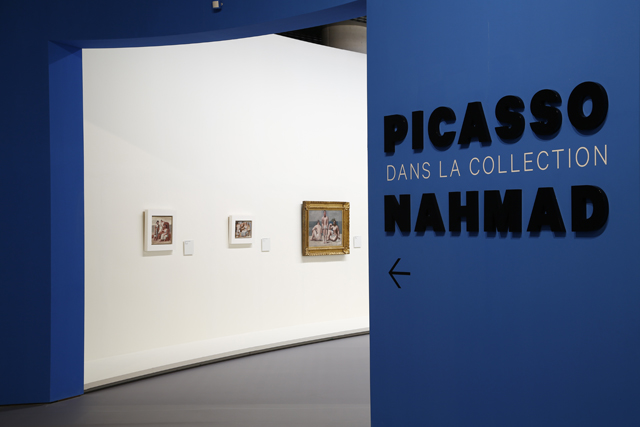
copyright JC Vinaj
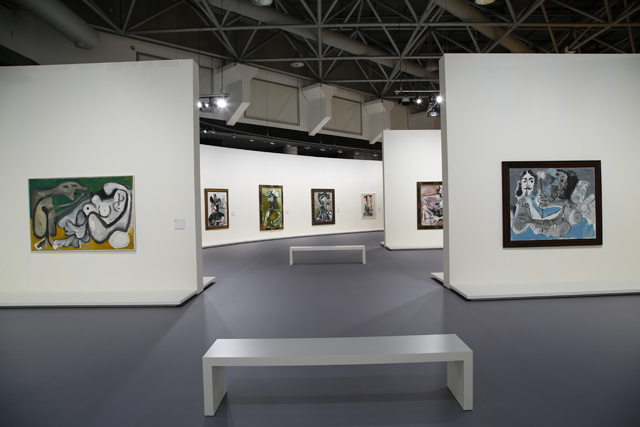
copyright JC Vinaj
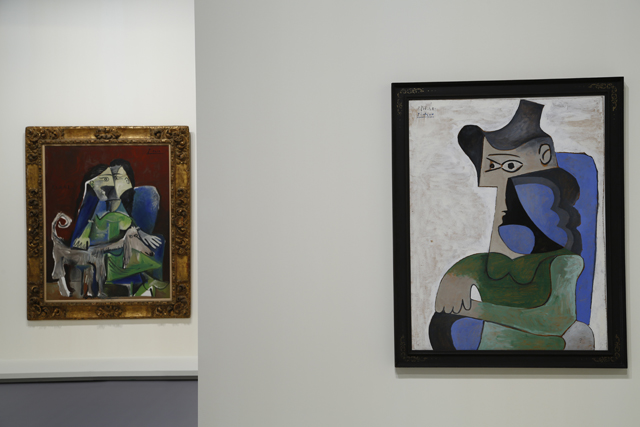
copyright JC Vinaj
and continues, "Yes, he shaped us with his idea of inventiveness and hard work: his way of living, thinking and his enormous intelligence-they 're an example for us, just like his simplicity, especially towards the end of his life."
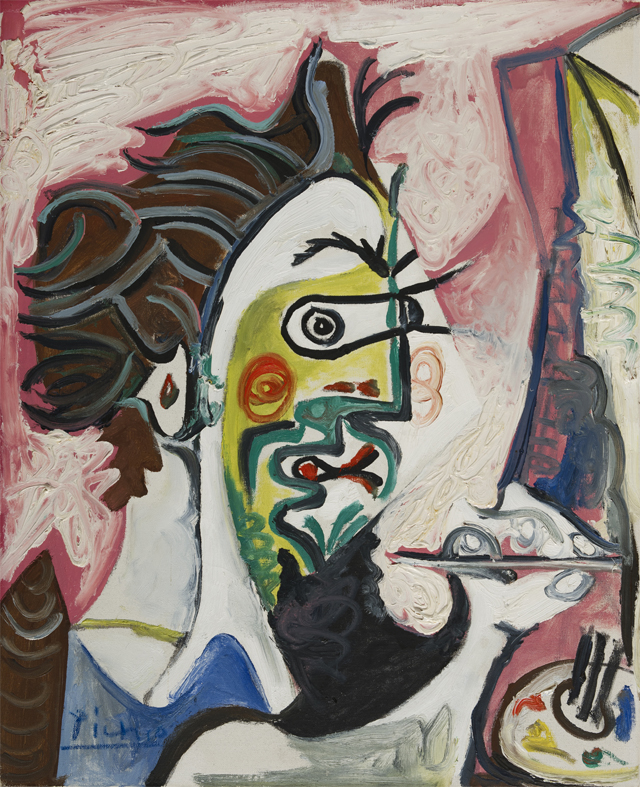
Le Peintre, (10 march 1963) Oil on canvas, 61 x 50,1 cm Collection Ezra and David Nahmad © Succession Picasso 2013
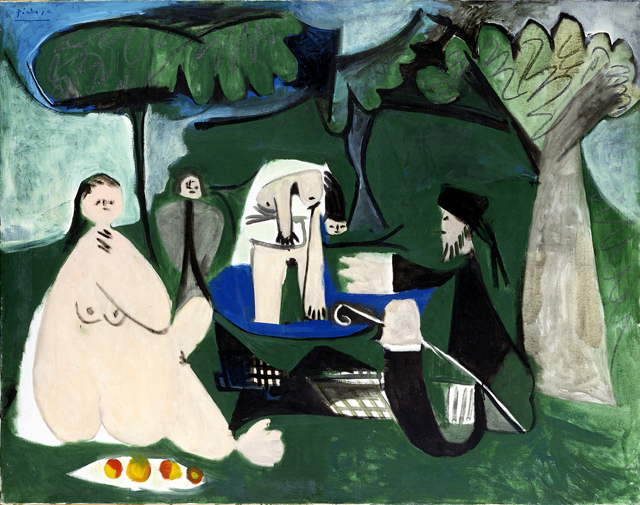
Le déjeuner sur l'herbe, (27 february 1960) Oil on canvas, 114 x 146 cm Collection Ezra and David Nahmad © Succession Picasso 2013
Nahmad family, 50 years serving art
The Nahmad Family were originally from Aleppo, in Syria where they had a small banking business. They were hard-working and lived in a traditional Jewish environment. However, after World War II, the political situation in Aleppo became difficult so they left for Beirut, where Ezra and David were born in 1945 and 1947. Beirut was a bustling metropolis, very cosmopolitan and had a mixture of cultures and religions. There they had a happy childhood. Their father Hillel was an extremely hard-working and very good humored patriarch. He was a real pillar of his community; very well known, loved and respected. His wife, Mathilde, was 100 percent a mother, she had eight children and she devoted her whole life to them. She was very European in outlook. Together they provided a stable, hard-working environment and gave their children a lot of confidence. They knew their value and they knew the value of work. They were encouraged to pursue their dreams, despite the fact that their way of life was not excessive in any way. A very down- to-earth life, but spiritually very rich. The family stayed there for several years and left in the 60s.
At that time the family suffered an enormous blow when the eldest son, Albert, who had left home as a teenager and was a making a successful career in banking, was killed in a plane crash in South America. For his parents this was obviously a massive tragedy and they were heartbroken, so because of the political situation in Beirut and because of this event, they all wanted to go and be together with Joseph in Milan where he was an art collector...
At this time Ezra and David were teenagers. Milan had a very dynamic culture. There was rejuvenation and it was fun, there were movies and glamour and there was a bustling art scene. Joseph had become a success in business. There were many opportunities in post-war Europe and the modern world as we know it was just starting to take shape. He was investing in real estate and importing and exporting. He loved glamorous Italian cars, houses and art, and stayed in Portofino and Venice. He never married, and was addicted to work. He was a risk taker, quite the opposite of his father, the conservative family man, and this is when he started to collect art. Joseph’s father disapproved of his son’s art collection and one evening, during a dinner party at Joseph’s apartment, a small masterpiece by Gauguin was stolen! A few days later, when Joseph’s father read about the robbery in the newspaper, he exclaimed that his son was not robbed during the party, but the moment he purchased the painting!
Joseph loved art. In his apartment in Milan he had special commissions by Lucio Fontana and Wifredo Lam, the Cuban artist living in Italy, and from Arnaldo Pomodoro. He also had commissions by Giorgio de Chirico, with whom he later had a contract. He knew everyone. He knew all of Milan. He was very gregarious, very outgoing, and very bohemian in a way. There were always starlets in the house like Rita Hayworth and people like that! He had good taste and started collecting art in a meaningful way.
Ezra and David had been very entrepreneurial since their childhood. At school they bought and sold marbles and sweets, and then sold English novels to American Sailors stationed in the port of Beirut. Then in Milan, they would go to San Siro Stadium on Sundays, after football matches, and sell T-shirts and badges of the winning team. They knew that only the fans of the winning team would be in the mood to buy! They would watch the match in the local bar until half-time and then speculate on which team’s T-shirt to have quickly printed! Working was in their DNA. This was their fun, not playing in the garden. At the age of about 15 they had started to borrow money and invest in the Italian stock market. At one point, they spent entire days trading on the floor of the stock exchange instead of going to school! That was their character. This commercial attitude combined with the cultural scene in Milan and the fact that their elder brother was a passionate art collector lead to a natural interest in the art market.
There were already several important galleries in Milan but none of them had access to international artists, who were mostly based in Paris. At the time there was no easy way to do business with Paris. None of the Italian art dealers spoke French or had even thought to travel abroad, so it created a unique opportunity for them. They spoke perfect French and were very happy to take risks, very happy to go to Paris and very excited to travel and work non-stop. They were really the first in Italy to have Picasso, Miró, Kandinsky and Léger. At that time in Italy there was a lot of business going on, but in a very Italian way! It was, “I’ll give you one of these against one of those, and half a cheque, and six months later you’ll get paid.” It was an incredible place to learn. But they managed to find their way through this, working at full steam with a lot of risk and very little capital and making ends meet. It was a fun working time, a heroic time.
There was an exhibition in Rome of the Cubist painter Juan Gris organized by Daniel-Henri Kahnweiler, the legendary Parisian art dealer. There they purchased two paintings and a year later they made their way to the Louise Leiris gallery in Paris, where they finally met Kahnweiler himself. When he discovered that these were the young boys who had purchased the paintings by his favourite Cubist painter the relationship was set. The exhibition in Rome was during the summer months and so apart from those two paintings nothing else had sold at all. Kahnweiler immediately admired their energy, their youth, their courage and, of course, their love of Gris! It was a genuine love.
Kahnweiler was astonished because they were so different from all the other people in the art world in Paris. They were intriguing to him as he was obviously from a different generation. He was acknowledged and respected around the world and had excellent contacts with artists and museums. Ezra and David, being so young, had almost no contacts at all. They were still teenagers. They actually tried to pay for the paintings on the spot.
As a sign of goodwill and also to show how serious they were. They said “we're going to pay you right now”, and not like in Italy where everyone paid slowly. But Kahnweiler replied, “Take the paintings and pay in six months.” He suggested it. So they went back to Milan with the paintings and the money! Nobody in Italy had any paintings by Picasso so there was real demand. They were back in Paris within a week! They stayed in small hotel rooms, drove all the way or took a train at night, coming back in the morning. One day, after buying a large and important painting by Picasso, they decided to drive all night, straight back to Milan. As the painting was too large to fit into the boot of their Morris Minor they decided to tie it to the roof of the car! When they arrived in Milan, to their horror, they discovered that the painting was no longer there – it had been blown away on the motorway! They immediately started to drive back and luckily found the painting, unharmed, lying in the grass on the side of the road!
This went on for many years and they bought and sold much of what you see in major museums and collections today. From Kahnweiler they bought Cubists, Picasso, Braque, Léger and Gris. From Maeght they bought works by Giacometti, Miró and Kandinsky. Those were their main artists. There was a lot of back and forth. Kahnweiler gave them this incredible opportunity. He recognized in these boys an enthusiasm for work and solid values which reminded him of his own journey. He had a genuine affection for them. That whole period was a great adventure for the two brothers. It was at this point that Picasso was busy working on his famous series Dejeuner sur l’Herbe, which you can see in the exhibition, and which was purchased by them as soon as it was painted.
In the mid-sixties they had made their first trips to New York, and saw that the market there was different from Europe. There were great galleries, such as Pierre Matisse (the son of Henri Matisse), Klaus Perls and Sidney Janis. They opened a gallery on Madison Avenue on the corner of the Carlyle Hotel, opposite Sotheby's. The gallery was inaugurated by Salvador Dali himself and the whole of New York turned up! It was here that they met most of the greatest collectors of the twentieth century from around the world. Over the years, they bought and sold paintings from the collections of Andre Meyer, Andre Lefevre, Henry Havemeyer, Henry Ford, Alfred Barr, Douglas Cooper, Roland Penrose, Edward James, Baron Thyssen and Peggy Guggenheim, to name but a few!
Then by the early 70s things started to change in Milan. The global petrol crisis in 1973 led to a recession and the rise of the Communist Red Brigades. Things became very unstable. The Prime Minister was kidnapped and killed; there was social unrest. The situation in Italy started to turn sour, everything started to change. Milan was more or less finished.
During the 1970s everyone was living in different cities and so at this point they started to see Monaco, where their parents spent a lot of time, as their common place. As they were now so spread out, spoke several languages and had gained quite a lot of experience, they were really among the first players in the art world with a global perspective of the art market. They were laying the foundations of the truly international art scene we all recognize today.

La ceinture jaune (Marie-Thérèse Walter), (6 janvier 1932) Oil on canvas, 130 x 97 cm Collection Ezra and David Nahmad © Succession Picasso 2013
Top image: detail from Pablo Picasso's portrait by Richard Avedon
.png)



